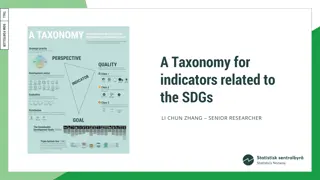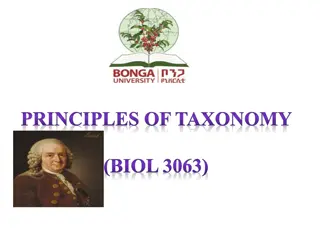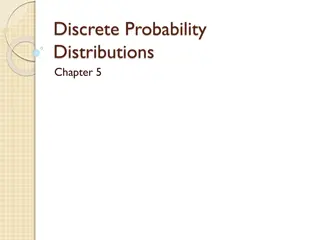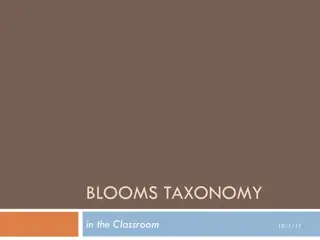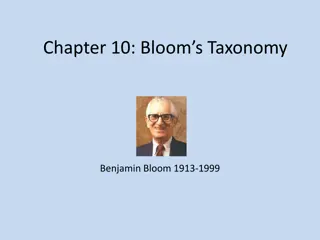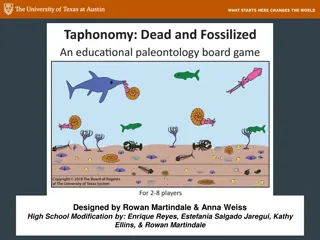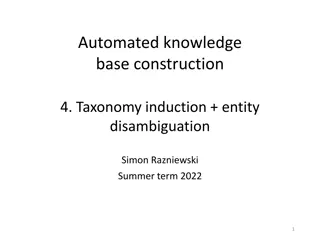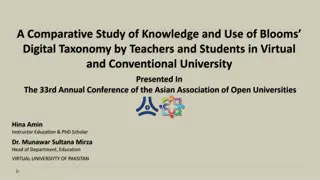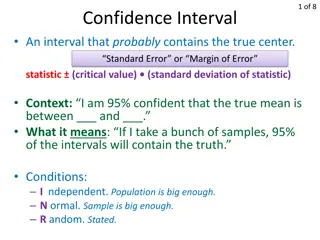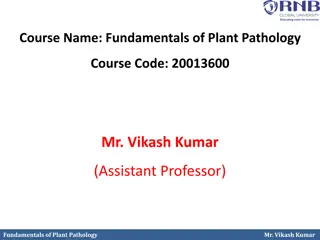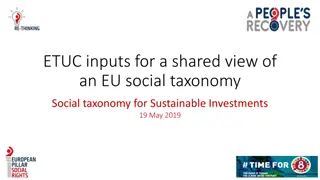Study of Life on Earth: Taxonomy, Taphonomy, and Statistical Distributions
Categorize life on Earth using taxonomy, explore the process of fossilization in taphonomy, and delve into statistical distributions and p-values in this informative content. Discover how organisms are classified, the factors affecting fossil preservation, and the significance of statistical analysis, including null and alternative hypotheses.
Download Presentation

Please find below an Image/Link to download the presentation.
The content on the website is provided AS IS for your information and personal use only. It may not be sold, licensed, or shared on other websites without obtaining consent from the author.If you encounter any issues during the download, it is possible that the publisher has removed the file from their server.
You are allowed to download the files provided on this website for personal or commercial use, subject to the condition that they are used lawfully. All files are the property of their respective owners.
The content on the website is provided AS IS for your information and personal use only. It may not be sold, licensed, or shared on other websites without obtaining consent from the author.
E N D
Presentation Transcript
Museum Assignment Overview
Taxonomy Kingdom Phylum Class Order Family Genus Species Study of classifying organisms Categorize life on Earth First done by Linnaeus (1758) God s creations Place animals into groups based on similarity
What happens to you after you die? Taphonomy: field of geology that focuses on the process of fossilization and preservation of remains Taphonomic processes: things that happen Three of processes to know Taphonomic factors (filters): things that matter Three of factors to know
Taphonomic processes Necrolysis: breakup of the organisms after death Composed of perimortem and postmortem aspects Biostratinomy: burial of an organism, physical process Diagenesis: post-burial transformation
Taphonomic factors Taphonomic factors (filters): actions that can remove organisms from the fossil record Extrinsic factors: components of the environment that remove fossils Intrinsic factors: components of an organism s physiology that remove fossils Time: the greater amount of time, the more losses can accumulate
Statistical distributions and p-values Null hypothesis: general statement that an individual is no different from a random sampling of other individuals AKA: nothing interesting is happening Alternative hypothesis: statement that the individual you are measuring is different from a random sampling of other individuals AKA: something interesting is happening
AKA there is a 0.3% chance he is from this population (p-value = 0.003) Empirical Rule 68% within 1 SD 95% within 2 SD 99.7% within 3 SD 3.0 SD 0.3% of population are expected to be this tall
Statistical distributions and p-values By convention p-values less than 0.05 are considered statistically significant Misconception About p-values A low p-value denotes that the alternative hypothesis is true Low p-values mean that likelihood of incorrectly rejecting the null hypothesis is very low



